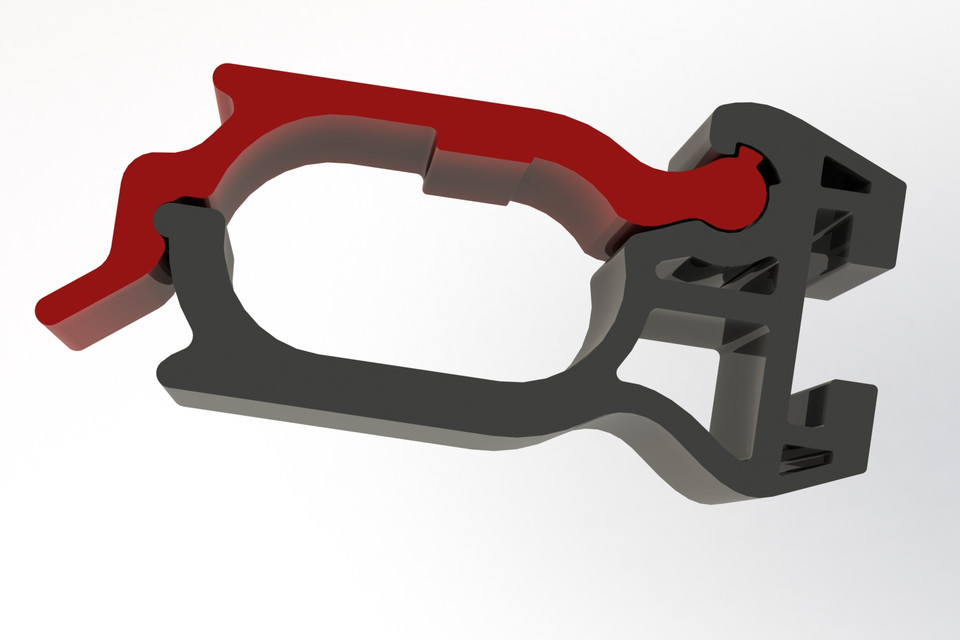NASA and GrabCAD have selected five winners of a crowdsourcing challenge to create innovative designs for International Space Station hardware that can be made with a 3-D printer currently on the station.
GrabCAD awarded the grand prize of a thousand dollars for the Handrail Clamp Assembly Challenge. Four other smaller prizes were also awarded. Almost 500 designs were submitted and reviewed by a panel of NASA judges to determine the winning design. The goal of the GrabCAD challenge was to use the power of a global online community to apply thousands of engineering minds to a design problem for less than the price of one with NASA receiving the rights to the awarded designs.

The challenge was executed by NASA’s Center of Excellence for Collaborative Innovation (CoECI), which provides NASA projects the tools needed to engage worldwide communities of designers, developers, and data scientist to create the most innovative, efficient and optimized solutions for specific, real-world challenges faced by NASA.
“We developed the Center of Excellence for Collaborative Innovation so we could work with groups like GrabCAD, which has almost 2 million members, and tap the creativity of the world to solve tough engineering problems,” said Jason Crusan, the Director of NASA’s Advanced Exploration Systems Division and Director of the CoECI at NASA Headquarters in Washington. “Using innovators to contribute to solutions to technical challenges is playing a crucial role for NASA in developing the technologies needed for humans to become Earth-independent and pioneer missions to Mars and other deep space destinations.”
One of the goals of the 3-D printing demonstration on the space station is to prove spare parts can be made in space. Currently, the crew has to wait on the next launch for a replacement part. By using in-space additive manufacturing, NASA can eliminate the need to only resupply a space mission by ferrying up supplies from Earth. Astronauts use the handrail clamp assembly to provide rigid mounting locations on the space station that are required in a microgravity environment to perform normal daily crew operations. NASA’s In-space Manufacturing team at Marshall Space Flight Center worked with the International Space Station Crew Tool Office at NASA’s Johnson Space Center in Houston to develop the requirements for the challenge and judge the submissions as potential on-orbit alternatives to the traditionally manufactured part launched to space. To be considered, designers had to meet certain requirements such as creating a design that could be made out of ABS plastic and making it with as few parts as possible to reduce assembly. The new additively manufactured part is called a CHAMP: Clamp for Handrail with Additively Manufactured Parts.
“Last year, NASA manufactured the first parts every made in orbit,” said Niki Werkheiser, NASA’s In-Space Manufacturing Project Manager at NASA’s Marshall Space Flight Center in Huntsville, Alabama. “But to be successful, we need to do more than make parts in space. Deep space explorers will have to be able to design parts for use in different environments, and the GrabCad community can help NASA learn how to optimize designs.”
The challenge supports NASA Human Exploration and Operations Mission Directorate’s 3-D Printing in Zero-G International Space Station Technology Demonstration that demonstrates the capability of using a 3-D printer for in-space additive manufacturing technology. The first parts printed in space where recently returned to Earth on the SpaceX Dragon and will undergo extensive testing at Marshall. This is the first step toward realizing an additive manufacturing, print-on-demand “machine shop” for long-duration missions and sustaining human exploration of other planets, where there is extremely limited ability and availability of Earth-based logistics support.
See all the winning GrabCAD designs here.
- Michael Herbert from Vancouver, Canada ($1000)
- Kristian Zimmerman from Germany ($500)
- Gergo Graf from the United Kingdom ($250)
- Eston Hoffman from Pennsylvania ($150)
- Singlefonts from Eindhoven, Netherlands ($100)

























